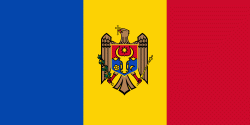Căușeni District (Raionul Căușeni, ) is a district in the central part of Moldova, with the administrative center at Căușeni. The other major city in the district is Căinari. According to the 2014 Moldovan Census, the population of the district is 81,185.
The Căușeni District was the first district of Moldova to be recorded in 1455. The next localities of the region to be recorded were: Zaim, Cîrnățeni, Fîrlădeni, but not until the period 1535–1573. In the 16th-18th centuries, intensive agriculture and wine-making industries developed and population grew as a consequence. In 1761, in Căuşeni city, the Assumption Church was built with beautiful painted frescoes on the inside walls. In 1812, after the Russo-Turkish War (1806–1812), Bessarabia was occupied by the Russian Empire until 1917. During this period there was an intense Russification of the native population. In 1918, after the collapse of the Russian Empire, Bessarabia united with Romania. From 1918–1940 and again from 1941–1944 during the German occupation, the district became part of Tighina County. After the 1939 Molotov–Ribbentrop Pact, Bessarabia was occupied by the USSR in June 1940. In 1991 as a result of the proclamation of the Independence of Moldova, part of Căușeni District joined with Tighina County (1991–2003). In 2003 the district became an administrative unit of Moldova.




















